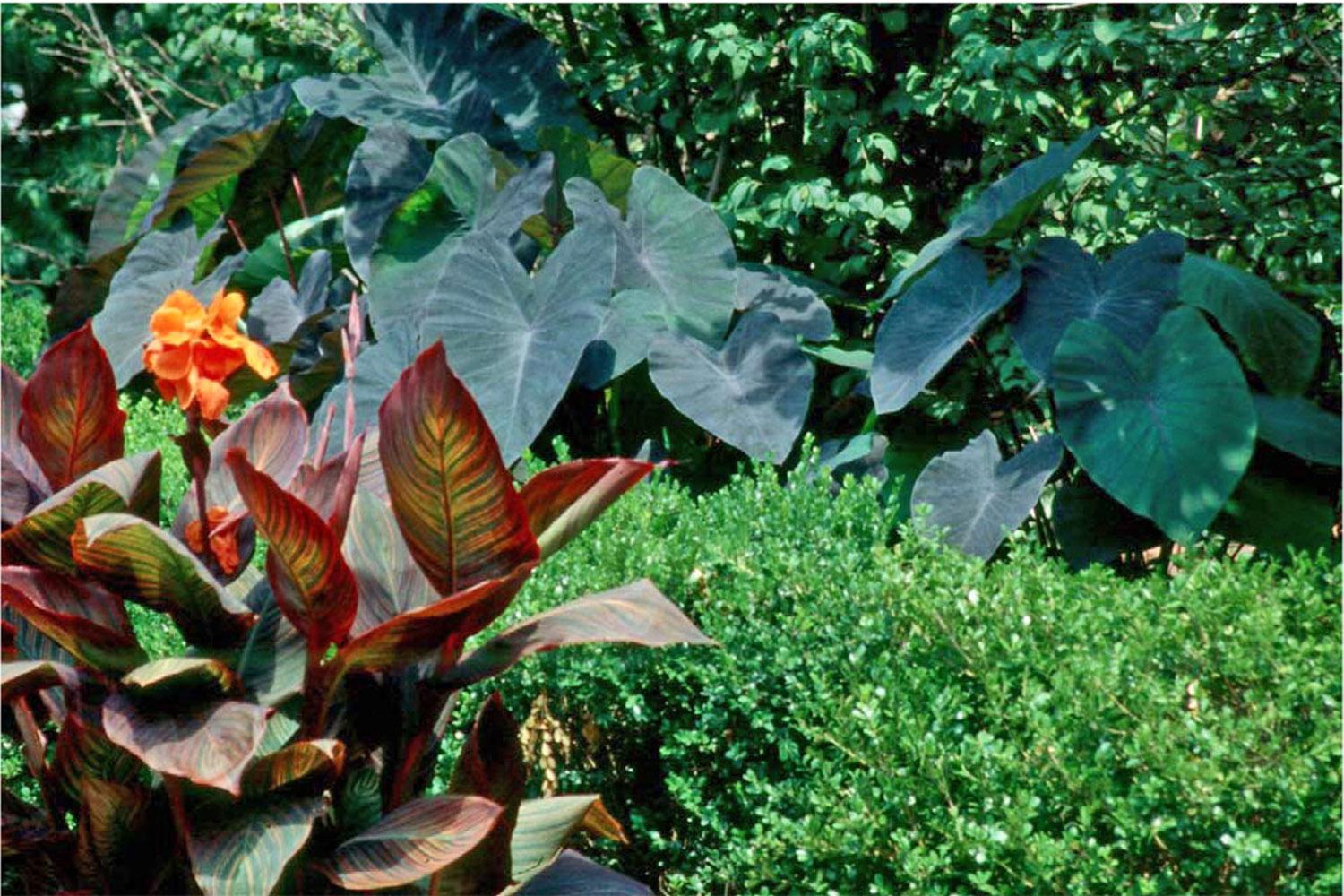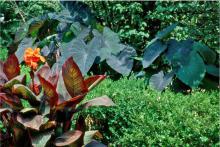Information Possibly Outdated
The information presented on this page was originally released on July 14, 2005. It may not be outdated, but please search our site for more current information. If you plan to quote or reference this information in a publication, please check with the Extension specialist or author before proceeding.
Elephant ears add a tropical flair to gardens
By Norman Winter
MSU Horticulturist
Central Mississippi Research & Extension Center
No matter where you go this summer the tropical look is hot, and one of the key ingredients to this Caribbean-style garden is the elephant ear.
With leaves that defy logic in size and proportion to other plants, it's not hard to see why this plant is so loved by Southern gardeners. It is not uncommon to see 6-foot-tall plants with 3-foot leaves on petioles reaching 4 feet.
As they have done with other popular plants, producers are striving to bring us more varieties than we even knew existed. I'll talk about these later.
Select a site with morning sun and afternoon shade, although I am seeing more and more fine plantings in full sun where providing adequate moisture is not a problem. The soil should be fertile and well drained, especially for winter survival.
If your soil is tight and heavy like mine, incorporate 3 to 4 inches of organic matter for good aeration and drainage. Or try planting on raised beds like the commercial landscapers do.
While preparing your bed, work in a slow-release pre-plant fertilizer like a 12-6-6 with minor nutrients. Use about 2 pounds per 100 square feet of bed space. Most gardeners buy the giant-sized bulbs, but more and more container-grown plants are being sold. Be sure to plant the bulbs so that the top of the bulb is 2 inches below the soil. If you are planting container-grown plants, set them at the same depth they are growing in the container.
Feed your elephant ears monthly with light applications of the fertilizer, and keep them well mulched. If you have an established clump, start feeding with the emergence of new growth in the spring. These are really low-maintenance plants: just remove tattered or unattractive leaves to keep them looking their best.
Though plants normally return even into zone 7, the tubers can be dug easily for winter protection. Let them dry for a couple of days, and then remove the foliage. Place them in dry peat and store in a cool, dry place.
Grow elephant ears with other coarse-textured plants like bananas, cannas and gingers. They combine well with ornamental grasses and can work with almost any other garden flower. Use them around the pool for a lush, resort-like atmosphere.
In many parts of the world, this plant is a starch substitute with names like poi and dasheen. You can even buy pancake mixes via the Internet. I'll take a loaded baked potato!
As I mentioned earlier, many varieties of elephant ears are available. Mostly we find varieties of the Colocasia esculenta. I call these the droopy type. The giant-sized, green-leafed form is the most common.
One of my favorite selections is sold under the name of Illustris or Antiquorum. Its leaves are not quite as large and have dark burgundy to black in between the veins. The Black Magic, with its dark purple leaves, is the most sought-after.
The elephant that I call upright is Alocasia macrorrhiza. I recently saw a wonderful established clump of these in Pine Bluff, Ark. These are available in typical green, variegated Variegata, and burgundy to purple forms called Metallica, Rubra and Nigra.
One really exotic specimen that I waited to try until this year is the African Mask. Botanically speaking, it is Alocasia x amazonica. It is small in comparison, but highly variegated and glossy. Though not as cold-hardy as some, it is relishing our Mississippi heat and humidity. I have mine growing in morning sun and afternoon shade beside a Japanese fiber banana and canna.
Going to the islands may not be possible, but thanks to plants like elephant ears, our gardens can look like we live there. It's not too late for you to plant them.








